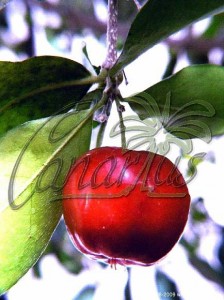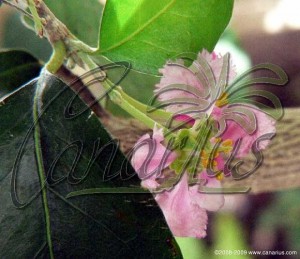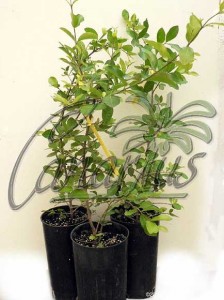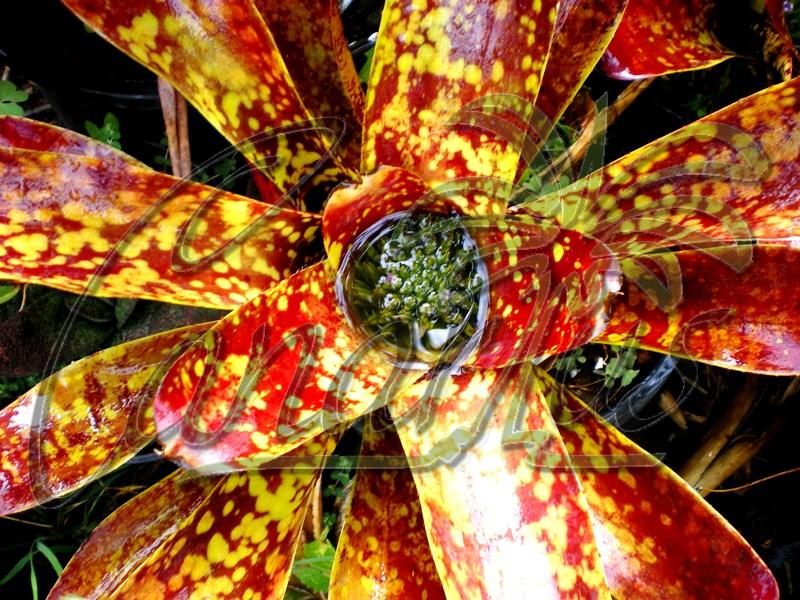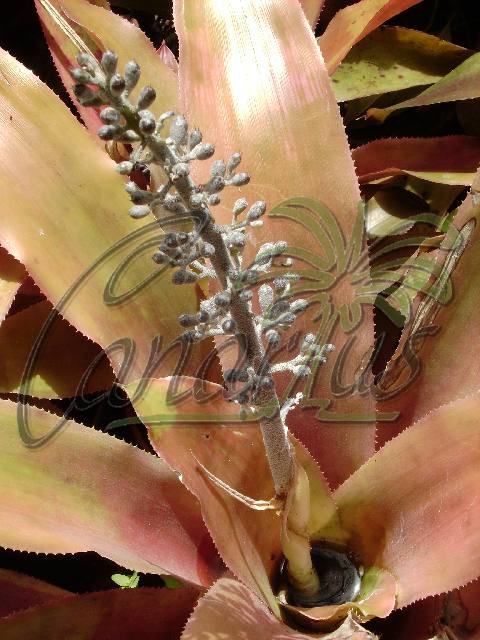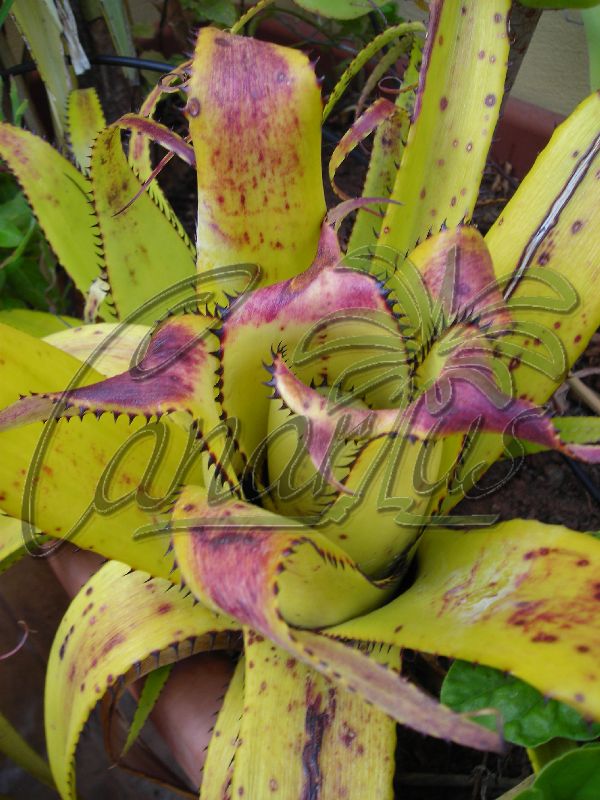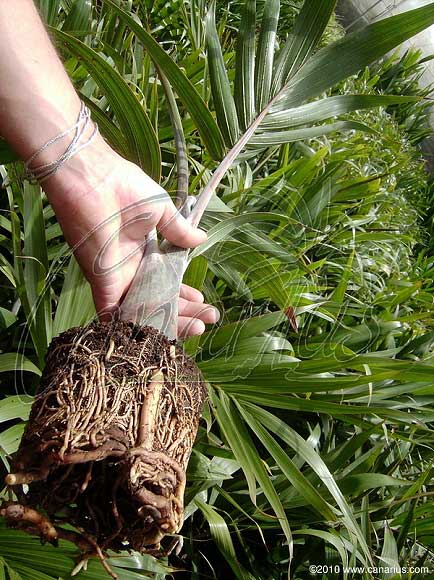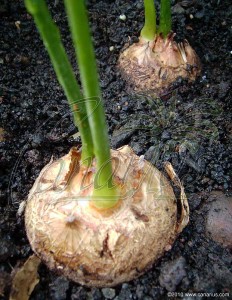Aechmea blanchetiana in Europe.
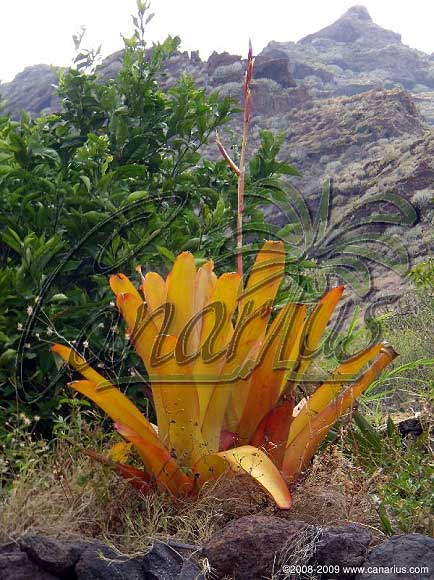
The inflorescence of Aechmea blanchetiana can reach 1,80 m in height.
Aechmea blanchetiana is the ultimate large bromeliad for landscaping outdoors, reaching intense orange-yellow colour in full sun. Aechmea blanchetiana is native to the Atlantic coast of Brazil, where it grows both terrestrially, in coastal sand, or epiphytically, on the branches of tall forest trees.
Clumping large rosettes of wide and shiny leaves, producing a spectacular floral display which lasts for months. The heavily branched inflorescence appears in July and grows to 1,7 m (5 ft) tall, in red and yellow.
You can buy this spectacular plant at www.canarius.com, in the Bromeliad Section of our shop.
How to grow Aechmea blanchetiana?
- It likes full sun and waterings every 2-4 days.
- It needs very little root space and can grow in small pots or rockeries.
- It takes frosts of about -3 to -4 C with little damage
- It takes coastal conditions with some salt
- It takes hard drought with little damage.
- It adapts to semi-shade but leaves turn green, larger and floppier.
- Keep fertilizer low. High nutrients will make the leaves turn green.
TIP: Larger plants become much more resistant to cold or drought. Leave the pups on the mother plants and you will get a large clump in 3-4 years.
Can I grow Aechmea blanchetiana in Europe?
Yes, this large bromeliad can be planted outdoors in coastal Mediterranean Climates. Adult plants are fully hardy to about -3 C (26 F). You will need to provide minimal protection during colder winters.
If you get harder frost or heavy hail, you can bring the plants indoors during the colder months. You can grow huge blanchetianas in very small pots because these bromeliads need very little root space. They will become green in lower light. Put them outdoors in full sun when the warm weather is back and wait until they turn golden again.
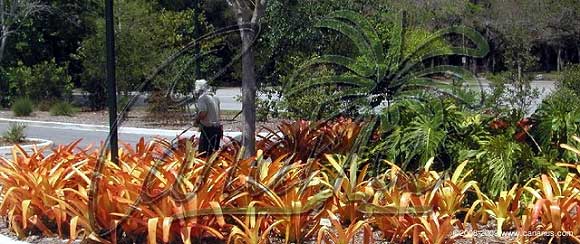
This large bromeliad is often used outdoors in full sun.
Why is Aechmea blanchetiana important in Modern Tropical Garden?
It was popularized by the famous German-Brazilian architect Roberto-Burle Marx, in Brazil, in the 60′s. He used large mass-plantings in his projects. After a while it jumped to the garden landscapes of Miami and California and then to the rest of the world.
How are the blanchetianas offered by from Canarius?
We offer large sized 30-40 cm (12-16 “) “pups” of Aechmea blanchetiana produced outdoors in the Canary Islands. Visit our shop at www.canarius.com we offer the right yellow-orange type. Some people call it Aechmea blanchetiana var. rubra but this name is not valid. This type is the true, typical Aechmea blanchetiana with intense orange-yellow colour in full sun.
You can also buy other large bromeliad species, like Aechmea callichroma, or Aechmea aquilega which are similar in size, shape and resistance with a different, pink or orange colour.
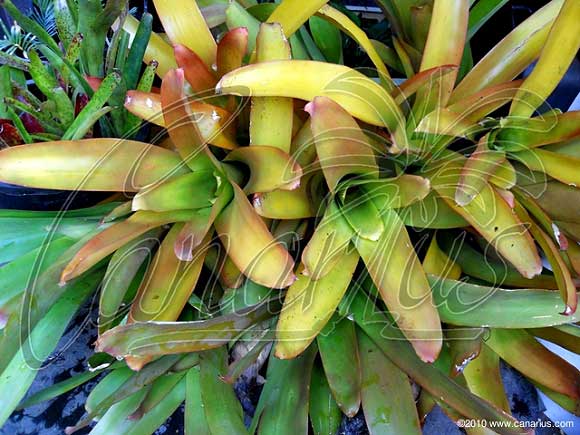
Crop of pups of Aechmea blanchettiana, ready for shipping.
















